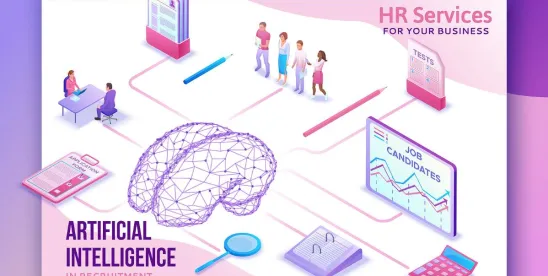It doesn’t seem fair that human resources (HR) personnel have to manage both labor shortages and overwhelming employee management tasks, but here we are. Companies are facing a critical shortage of skilled workers that is outpacing educational institutions’ training ability, not to mention a mismatch of skills. Yet, HR personnel are expected to sift through thousands of resumes with dubious potential to find skilled workers to replace the ones who are leaving at an increasing rate. As workers retire without sufficient workers to replace them, the problem will only get worse.
To meet these challenges and demands, a lot of companies are spending money on artificial intelligence (AI) to compensate for labor shortages in the hope that it alleviates these increasing burdens. AI generally refers to computers that can perform actions that typically require human intelligence. For example, whereas we used to write our texts and emails ourselves, our phones’ generative AI now offers to finish our texts and emails, or even suggests the entire message.
Most frequently, HR personnel use AI in their recruiting process — specifically to screen and review talent (e.g., scan resumés). Theoretically, AI can review more resumés more quickly than an entire HR department can. Trained properly, AI can select the best resumés and enable your team to interview higher quality candidates. And at the interview stage, AI can transcribe and summarize live interviews.
AI can also help train new employees. AI chatbots can guide new hires through the onboarding process and provide answers to questions in real time. It can send welcome emails and schedule training sessions, which can help make an employee’s onboarding experience smoother, with less effort from an HR department.
After training, generative AI can answer employees’ questions about various company policies and functions in real time including:
- Vacation, parental, and other leaves;
- Insurance (life and health)
- Expense reports
- Retirement accounts
- Health and wellness
- Disability coverage
- Family benefits
Answering these questions can allow HR personnel time to perform more value-added tasks.
Theoretically, generative AI can also help manage employees. Just like your phone’s AI can help you write texts, generative AI like ChatGPT can write or revise entire emails. And AI can adjust the tone of an email, making it more professional, more friendly, more detailed, etc., as the situation requires.
However, every rose has its thorn — or multiple thorns. When evaluating resumés, AI can rely upon outdated stereotypes as easily as people can. A recent study by Rippl found that prompts for doctors, engineers, carpenters, electricians, manufacturing workers, and salespeople produced only male results. When asked to generate images for a HR manager, marketing assistant, receptionist, and nurse AI provided only pictures of women. When asked to generate images of a CEO, AI offered only white, middle-aged men, whereas manufacturing workers were always young men of color and housekeepers were all young women. This can be especially dangerous, because according to one recent survey, 73 percent of HR professionals said they trust AI to recommend whom to hire.
As if that weren’t enough, AI can use its generative abilities to formulate a response that is linguistically correct but factually wrong. This phenomenon, called “hallucination,” has gained attention through media reports of AI guiding people to eat poisonous mushrooms or make other mistakes. That is, the “answers” that your generative AI bot provides employees and AI’s email “corrections” may contain hallucinations that might mislead your employees. Used incorrectly, AI can make mistakes that could take hours or days of HR time to correct.
Unfortunately for employers, their legal obligations under local, state, and federal employment laws remain regardless of whether they are engaging in recruiting, hiring, and managing applicants and employees directly, through a vendor, or through the use of AI. Further, if there are issues with regard to discrimination or bias in recruiting, hiring, and managing, those issues are typically systemic — that is, they have impacted numerous applicants and employees and may result in costly enforcement actions, government investigations, or litigation.
To protect against AI bias, hallucinations, and other risks, companies using AI should engage in appropriate AI governance – that is, the ability to direct, manage, and monitor an organization’s AI activities. Such governance includes, but is not limited to:
- Monitoring. AI is not “set it and forget it.” Companies should manage the risk from AI by monitoring for potential bias issues and alerting the proper personnel when the monitoring reveals a potential problem. Through appropriate monitoring, you can make sure you know about a potential liability before a lawsuit or a government enforcement action tells you about it.
- Written Policies and Procedures. Your company has written policies and procedures for all important aspects of their business, and that should include AI. Otherwise, your company could end up engaging in a “catch-as-catch-can” system, which is no more effective in AI than it is any other business context. Among other things, such policies should include an audit and review process, outline requirements for change management, and detail any plans related to incident response for AI systems.
- Accountability. You should have a person or team in place who is responsible for protecting against AI bias. Without personal accountability, your AI governance efforts will likely go by the wayside.
- Legal Considerations. You should be reviewing AI risks, including business and legal risks, with competent counsel. This may include review of any vendor or other agreements to provide AI to ensure that proper protocols and procedures will be used and that any legal risks are mitigated such as through the use of indemnification provisions or provisions delineating expectations and respective duties.



 />i
/>i

